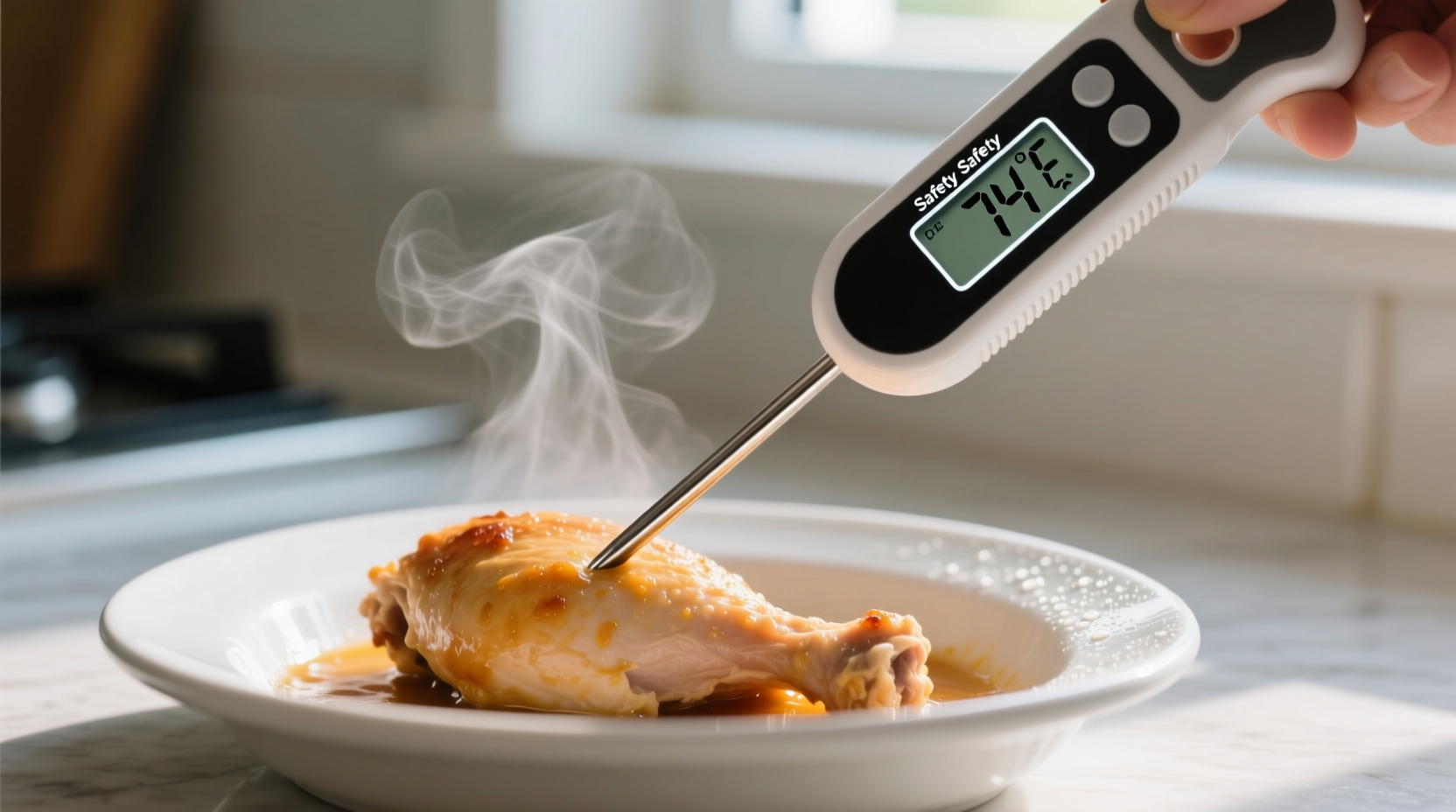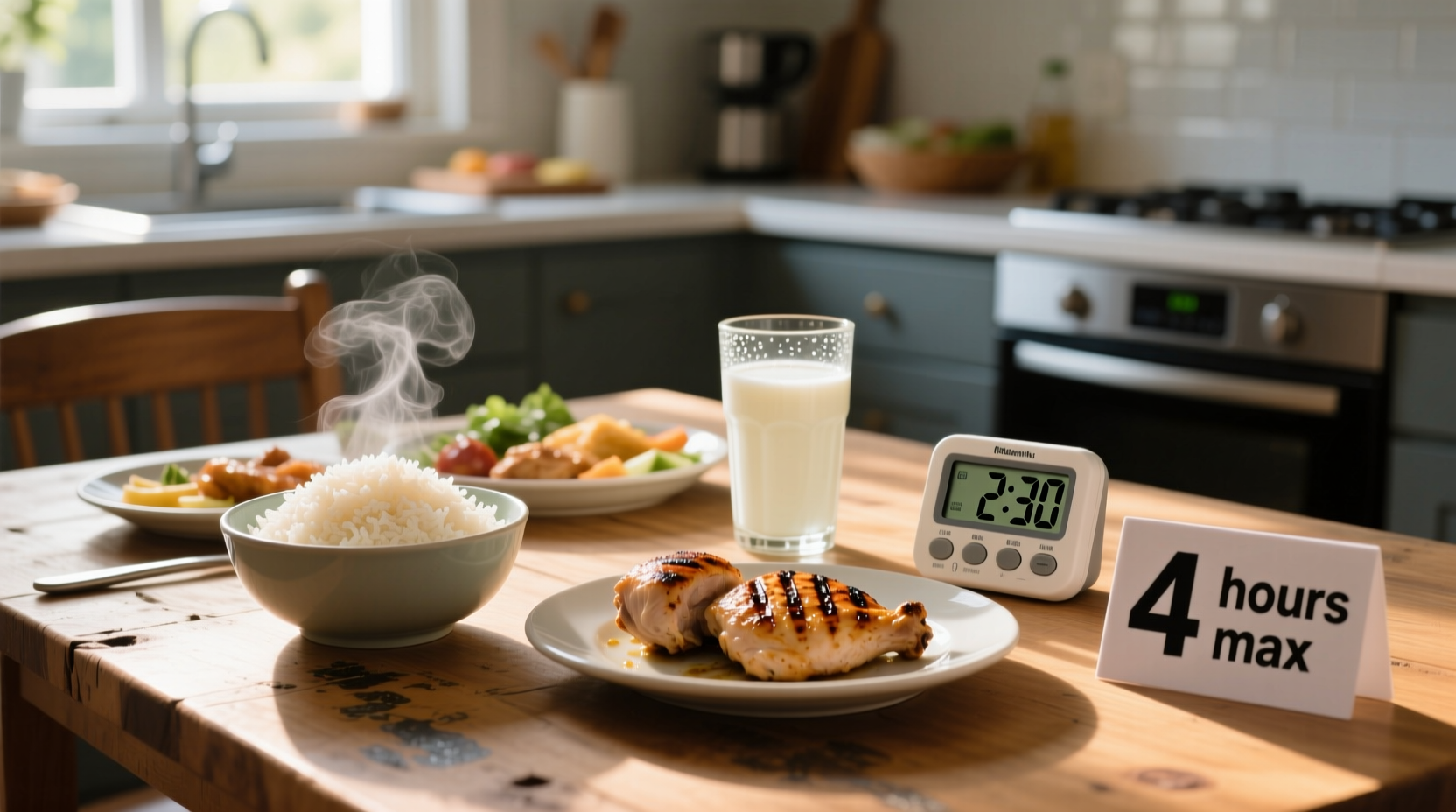Every year, millions suffer from food poisoning that could have been prevented with proper food handling. As someone who's worked in professional kitchens and taught home cooks for over 15 years, I've seen too many people make dangerous assumptions about how long food can safely sit out. The truth is simple but often misunderstood: time and temperature create the perfect storm for bacteria to multiply rapidly in your food.
The Science Behind the 2-Hour Rule
Understanding why the 2-hour rule exists requires knowing about the temperature danger zone—the range between 40°F (4°C) and 140°F (60°C) where bacteria thrive. Within this zone, pathogens like Salmonella, E. coli, and Listeria can double in number every 20 minutes. The USDA Food Safety and Inspection Service confirms that after just 2 hours in this temperature range, bacteria reach levels that can make you seriously ill.
| Time at Room Temperature | Bacterial Growth | Safety Status |
|---|---|---|
| 0-30 minutes | Minimal growth | Generally safe |
| 30-60 minutes | Noticeable growth | Monitor carefully |
| 1-2 hours | Rapid multiplication | Maximum safe limit |
| 2-3 hours | Dangerous levels | Discard immediately |
| 3+ hours | Extreme contamination | High illness risk |
Food-Specific Guidelines You Need to Know
Not all foods behave the same when left out. Here's what you need to consider for common food categories:
High-Risk Perishables (Follow 2-Hour Rule Strictly)
- Meat, poultry, and seafood
- Dairy products including milk, cheese, and cream-based dishes
- Eggs and egg-based dishes
- Cut fruits and vegetables
- Cooked rice and pasta
Special Cases With Shorter Time Limits
Certain foods require extra caution. Cooked rice and pasta can develop Bacillus cereus toxins within 1 hour at room temperature. Similarly, cut melons and tomatoes enter the danger zone more quickly than whole produce. The FDA Food Code specifically notes that cooked beans, lentils, and other legumes become unsafe after just 1 hour when temperatures exceed 90°F.

Real-World Scenarios and Practical Solutions
Life happens, and sometimes food gets left out longer than intended. Here's how to handle common situations:
When You're Hosting Gatherings
Buffets and party foods present special challenges. Keep hot foods above 140°F using chafing dishes, slow cookers, or warming trays. Maintain cold foods below 40°F with ice baths. Rotate small serving dishes rather than keeping large platters out for extended periods. The CDC reports that improper holding temperatures at social gatherings account for nearly 25% of foodborne illness outbreaks.
Leftovers From Restaurants or Meal Prep
If you've brought home restaurant leftovers or prepared meals in advance, follow these guidelines:
- Refrigerate within 2 hours (1 hour if hot outside)
- Divide large portions into shallow containers for faster cooling
- Never put hot food directly into the refrigerator
- When in doubt, throw it out—don't risk food poisoning
Common Misconceptions That Could Make You Sick
| Myth | Fact | Source |
|---|---|---|
| If food smells fine, it's safe to eat | Pathogenic bacteria often don't affect smell or appearance | USDA Food Safety.gov |
| Reheating food kills all bacteria | Some bacteria produce heat-stable toxins that reheating won't destroy | FDA Food Code 2022 |
| Dry foods like bread are always safe | Moisture-rich baked goods can still support bacterial growth | CDC Food Safety Guidelines |
Practical Food Safety Tips for Everyday Cooking
Implement these simple habits to protect yourself and your family:
- Use a food thermometer—the only reliable way to check if food has reached safe temperatures
- Follow the "touch rule"—if you can comfortably keep your hand on the container for 10 seconds, it's probably in the danger zone
- Cool food properly—divide large portions and use ice baths for rapid cooling
- Mark containers—label leftovers with date and time they were stored
- When reheating—ensure food reaches 165°F (74°C) throughout
Remember that high-risk individuals—including young children, elderly adults, pregnant women, and those with compromised immune systems—should follow even stricter guidelines. For these groups, the FDA recommends discarding any perishable food left out for more than 1 hour regardless of ambient temperature.
When Rules Differ: Special Considerations
Certain traditional food preparation methods operate outside standard food safety guidelines but require specific expertise. Fermentation, curing, and drying processes create environments that inhibit dangerous bacteria through controlled conditions. However, these techniques shouldn't be attempted without proper training and understanding of the science involved. The University of Minnesota Extension emphasizes that home food preservation requires strict adherence to tested guidelines to prevent botulism and other serious foodborne illnesses.











 浙公网安备
33010002000092号
浙公网安备
33010002000092号 浙B2-20120091-4
浙B2-20120091-4